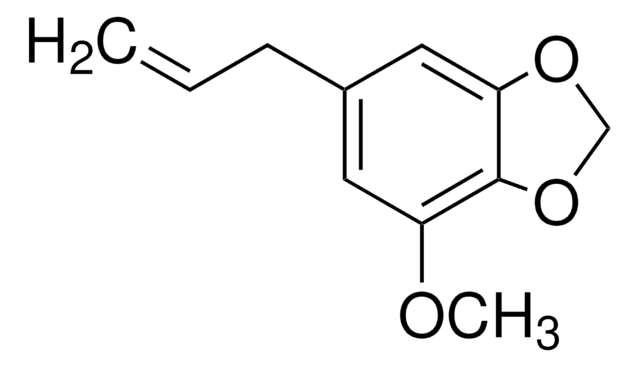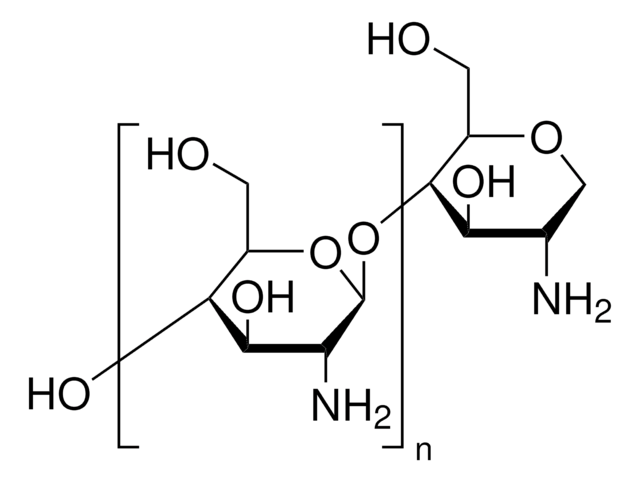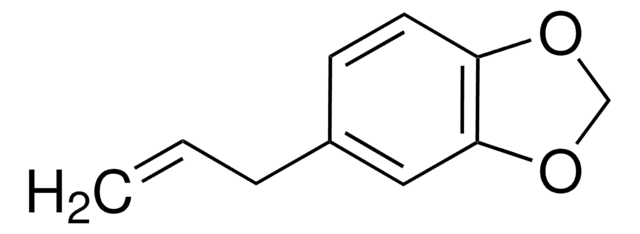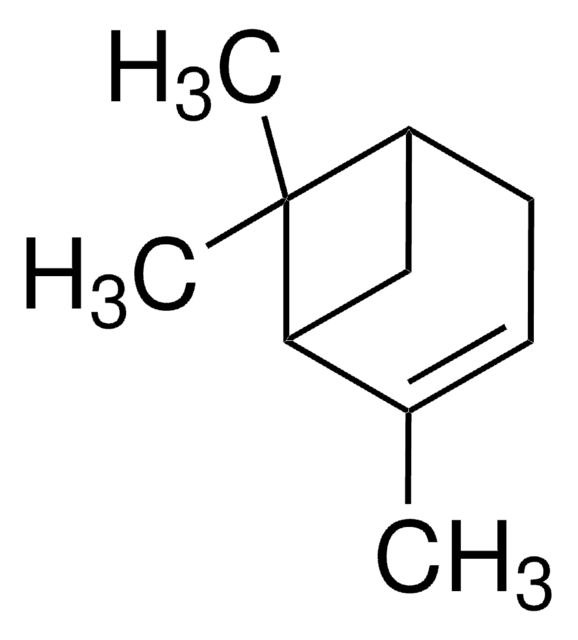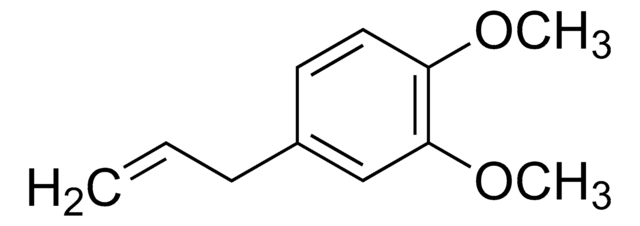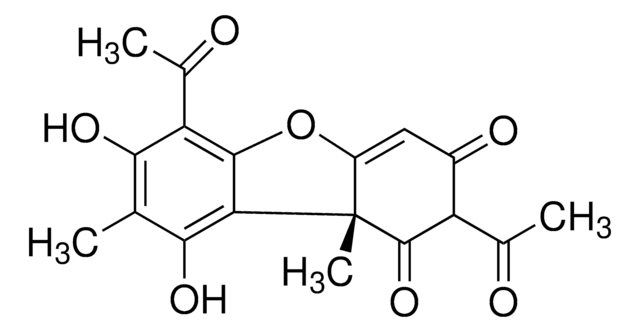09237
Myristicin
analytical standard
Sinónimos:
5-Allyl-2,3-(methylendioxy)anisole, 6-Allyl-4-methoxy-1,3-benzodioxole
About This Item
Productos recomendados
grado
analytical standard
Nivel de calidad
Ensayo
≥97.0% (GC)
caducidad
limited shelf life, expiry date on the label
técnicas
HPLC: suitable
gas chromatography (GC): suitable
aplicaciones
food and beverages
Formato
neat
temp. de almacenamiento
2-8°C
cadena SMILES
COc1cc(CC=C)cc2OCOc12
InChI
1S/C11H12O3/c1-3-4-8-5-9(12-2)11-10(6-8)13-7-14-11/h3,5-6H,1,4,7H2,2H3
Clave InChI
BNWJOHGLIBDBOB-UHFFFAOYSA-N
¿Está buscando productos similares? Visita Guía de comparación de productos
Descripción general
Aplicación
- Leaf extracts of parsley, dill, and celery grown in microwave fields using high-performance thin-layer chromatography (HPTLC).
- Rat urine samples using gas chromatography coupled to mass spectrometry (GC-MS).
- Human serum samples using gas chromatography (GC) with flame ionization detection (FID).
Envase
Productos recomendados
Palabra de señalización
Warning
Frases de peligro
Consejos de prudencia
Clasificaciones de peligro
Aquatic Chronic 3 - Repr. 2 - STOT SE 3
Órganos de actuación
Central nervous system
Código de clase de almacenamiento
10 - Combustible liquids
Clase de riesgo para el agua (WGK)
WGK 3
Punto de inflamabilidad (°F)
Not applicable
Punto de inflamabilidad (°C)
Not applicable
Equipo de protección personal
Eyeshields, Gloves
Elija entre una de las versiones más recientes:
¿Ya tiene este producto?
Encuentre la documentación para los productos que ha comprado recientemente en la Biblioteca de documentos.
Los clientes también vieron
Nuestro equipo de científicos tiene experiencia en todas las áreas de investigación: Ciencias de la vida, Ciencia de los materiales, Síntesis química, Cromatografía, Analítica y muchas otras.
Póngase en contacto con el Servicio técnico